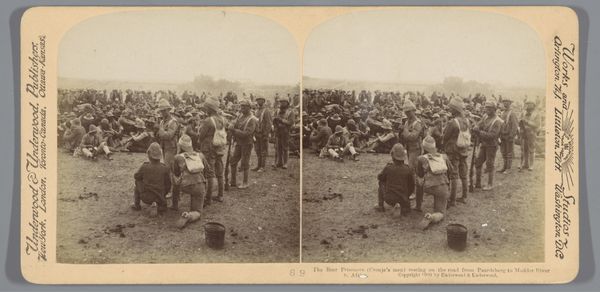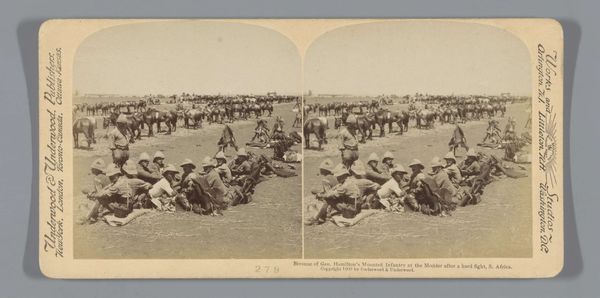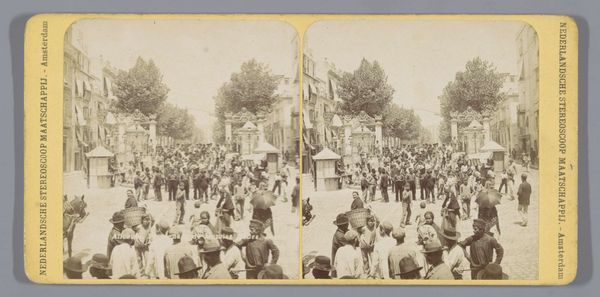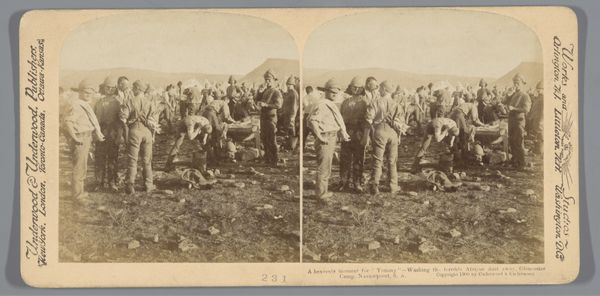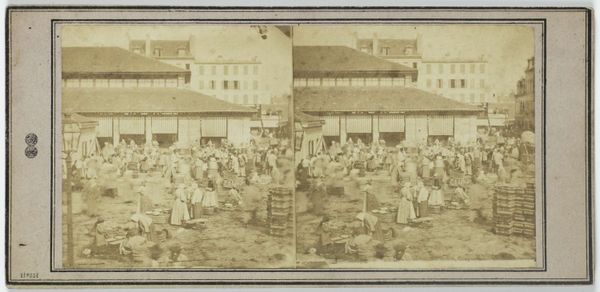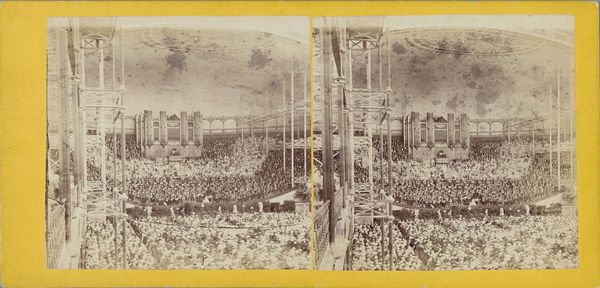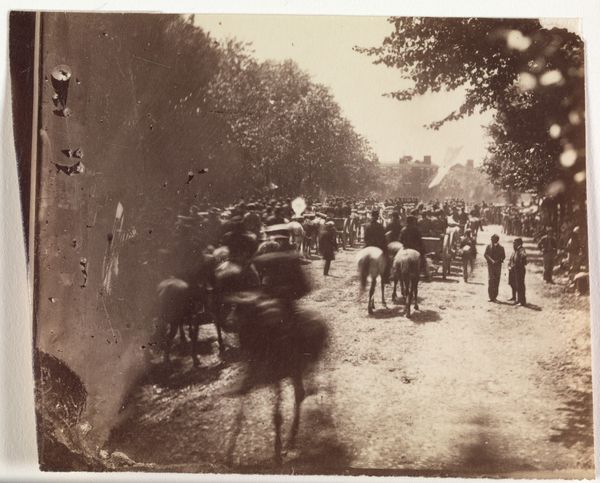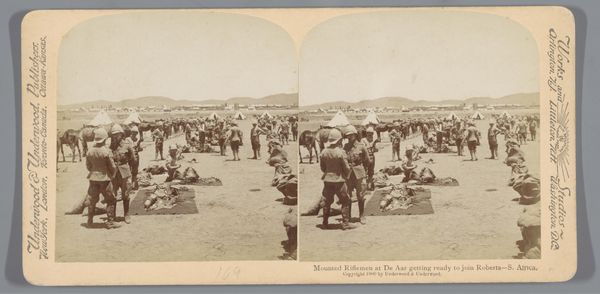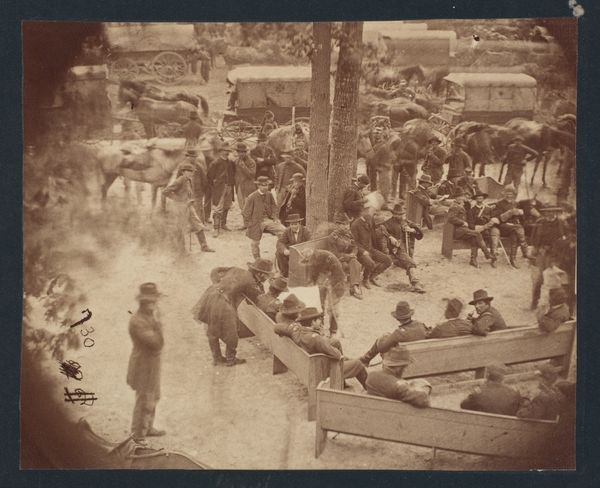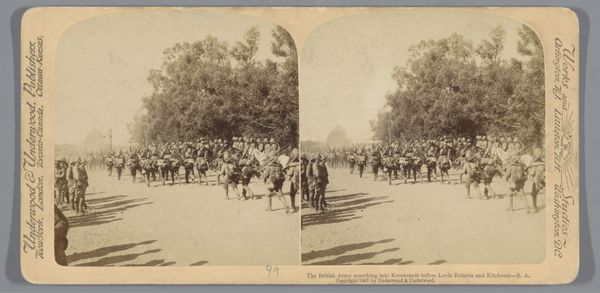
Piet Cronjé, generaal van de Boeren, is gevangen door de Britten bij de Modderrivier 1901
0:00
0:00
print, photography, gelatin-silver-print
# print
#
landscape
#
photography
#
gelatin-silver-print
#
history-painting
#
realism
Dimensions: height 88 mm, width 177 mm
Copyright: Rijks Museum: Open Domain
Editor: So, this photograph, titled "Piet Cronjé, generaal van de Boeren, is gevangen door de Britten bij de Modderrivier," was taken in 1901, likely a gelatin silver print. The mood feels heavy, burdened by the sheer number of figures. What's your perspective? Curator: It's fascinating how photography, often deemed objective, here pulses with a silent narrative. A story of capture, a story of a people. I imagine the dust and heat of that day in South Africa. But consider this—what doesn't the photo show? We see the captured General Cronjé, yes, but not the intricacies of the conflict, the motivations, the wider socio-political tapestry. It's a single frame from a much larger, bloodier reel. Editor: I hadn't thought of it that way. We're seeing such a small snapshot, aren't we? All those blurred faces are just… stand-ins for a bigger narrative? Curator: Precisely! They represent a turning point in the Boer War. A visual shorthand for power dynamics, colonial ambition, and the human cost of conflict. But the silence of the photograph invites our speculation, demands we ask: what happened before? And crucially, what followed? Editor: It almost feels like we’re invited to write our own narratives based on this frozen moment. The stark landscape amplifies the emotion. Curator: Landscape too is not neutral. The lack of prominent features emphasises that open exposure, the vulnerability. Does it evoke similar thoughts for you, then? Editor: Yes, completely. It prompts me to remember that history isn't just about grand events, but also the individual stories within them, even those faces blurred by time and distance. Thank you for illuminating this work! Curator: And thank you for bringing fresh eyes and keen insights to this tiny window into a complex past.
Comments
No comments
Be the first to comment and join the conversation on the ultimate creative platform.
